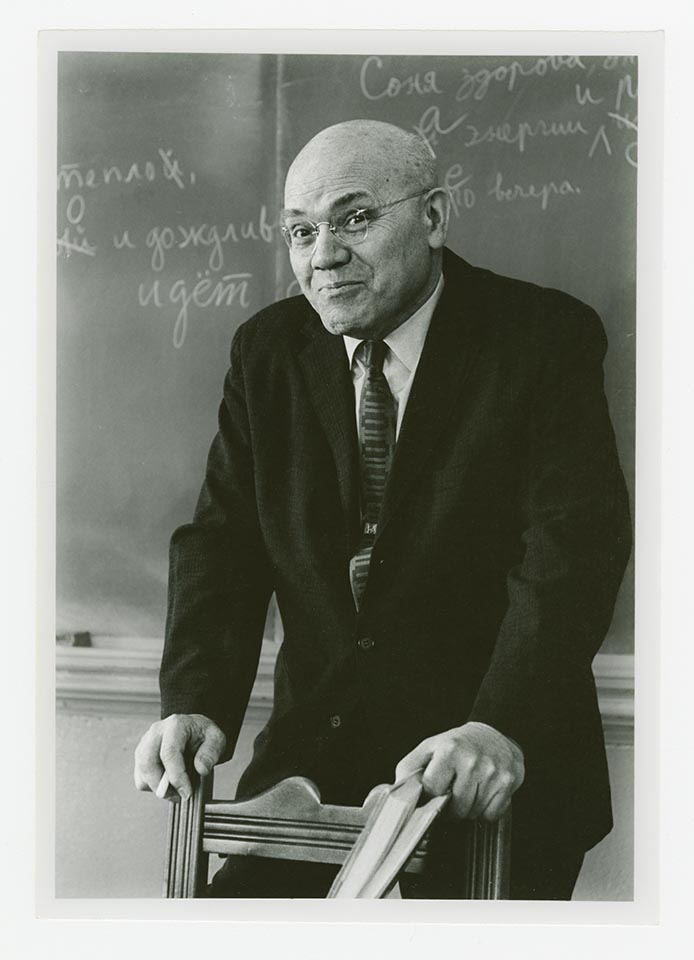
Image: Special Collections & University Archives
At the height of the Cold War, one of the most popular Colgate core courses was one taught by a short, round-faced man with glasses and a congenial smile: Russian professor Albert Parry.
Would it surprise you to know that he was also a CIA operative, acclaimed author, journalist, and political analyst?
Born Avrom (Abraham) Paretsky, Parry fled Russia for the United States in 1921, a time of great famine amid the Russian Revolution. When he emigrated, he worked hard to assimilate into his new environment, forgoing his Jewish roots as well as his name, as described in Repression, Re-Invention, and Rugelach: A History of Jews at Colgate. He earned his bachelor’s and PhD degrees in history from the University of Chicago and briefly taught at Northwestern before joining Colgate in 1947 (at the suggestion of Adlai Stevenson II, according to a March 27, 1969, article in the Maroon). At the University, Parry started Colgate’s Russian Studies program, the first of its kind in the country. He initially came to Colgate at the invitation of President Everett Case, who wanted to have a Russia expert on campus, and he taught courses in language, politics, literature, and history.
Parry often spoke about Russian foreign policy during his time at Colgate: According to the Oct. 16, 1957, issue of the Maroon, Parry predicted the launch of Sputnik1, organized by the Soviets without U.S. knowledge. He’d previously warned that the Soviets were moving ahead in the space race, and “a crucial race in astrophysics and astronautics is on,” as noted in a 1954 article in the Reporter.
“Even as we stand thrilled at the thought that man has at last broken the atmosphere’s barrier and is now virtually en route to other planets, we cannot forget that this is a Soviet Russian, not Western, triumph. It is a tremendous shock,” Parry said of the Sputnik launch in the Maroon.
Parry started his academic career after a brief stint in media: According to his New York Times obituary, he wrote articles for newspapers and magazines, including Esquire. That connection to the written word would never leave him — throughout his life, he wrote history books on bohemianism, tattooing, and more.
For a time during World War II, Parry was involved with the Office of Strategic Services, a precursor to the CIA. In his capacity, “he was assigned to keep an eye on the German-American community in the upper Midwest by going undercover as a lecturer and traveling around the region looking for anything out of the ordinary,” says Repression. He also worked with MI6, and later the CIA. But on campus, he was just Professor Parry, who adeptly taught Colgate students about the land that was once his home, and all of the politics surrounding it.
Parry left Colgate in 1969 and spent a few years at Case Western Reserve University before retiring in 1971. He died on May 4, 1992, at age 92. He is buried in the Colgate cemetery.
Parry wrote several books throughout his career — Garrets and Pretenders: A History of Bohemianism in America (1960) and Tattoo: Secrets of a Strange Art (1933) were among his most successful.
